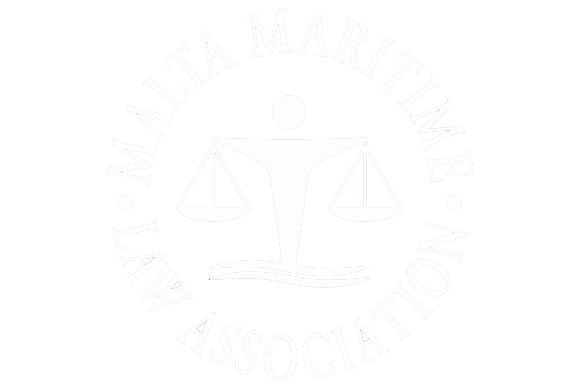On the 9th of August of 2024, the new Health and Safety at Work Act (therein after referred to as the ‘Act’) was published by Parliament, and has now subsequently repealed the Occupational Health and Safety Authority Act (Ch. 424 of the Laws of Malta) by means of L.N. 321 of 2024.
This new legislation, which came into force on the 26th of November 2024, is designated as Chapter 646 of the Laws of Malta.
The new Act continues to uphold and implement the principles outlined in Directive 89/391/EEC, which seeks to promote measures aimed at improving the safety and health of workers in their workplaces. It establishes a comprehensive and structured framework for ensuring that occupational health and safety remain a priority, enhancing protections for workers while fostering a culture of safety within the workplace.
It is noteworthy that the subsidiary legislation initially enacted under the former Occupational Health and Safety Authority Act (Chapter 424 of the Laws of Malta), such as those related to maternity protections and the protection of young persons at work, has now been transferred and renumbered under the new Health and Safety at Work Act (Chapter 646 of the Laws of Malta). This transfer ensures that these important protections remain integrated within the updated legal framework, providing continuity and clarity in their application under the new Act.
The new Health and Safety at Work Act (Chapter 646 of the Laws of Malta) introduces a more comprehensive legal framework compared to its predecessor, enhancing employee protection. Key changes include restructuring the OHSA for better governance, reforming penalties to boost compliance, and clarifying employer responsibilities. The Act also establishes the Health and Safety Tribunal and Compromise Procedure for dispute resolution, introduces Health and Safety Reporting Officers (‘HSROs’), and incorporates Administrative Instruments to streamline enforcement. These updates aim to strengthen health and safety measures and improve oversight in the workplace.
Restructuring
The Act now establishes that the Occupational Health and Safety Authority will now include a Governing Board which will be responsible for ensuring governance, overseeing health and safety initiatives, reviewing budgets, managing accounts, and consulting relevant bodies on worker health and safety. Moreover, the Health and Safety Executive will be responsible for implementing the Act. While the OHSA retains its distinct legal personality, the Board must refrain from interfering with the Executive’s operations to ensure the Act’s objectives are met.
Administrative Instruments
The concept of Administrative Instruments is a new addition to the Act, and this will grant the Chief Executive Authority to issue such instruments, with Ministerial Approval, to regulate specific matters within its competence. These Instruments are issued in situations which would require urgent action and can cover areas such as setting qualifications for health and safety tasks, prohibiting high-risk work activities, regulating mandatory employer insurance, and defining required accreditations for competent persons. They must be published on the OHSA website, and non-compliance will be considered a breach of the Act..
Health and Safety Reporting Officer
This new Act also stipulates that employers may be required to appoint a Health and Safety Reporting Officer to oversee and monitor the day-to-day implementation of health and safety policies at the place of work. Failure to appoint such officer will result in the employer’s liability to pay up to €50,000, as determined by the Authority. The HRSO has to be a high-ranking employee at a managerial level, and he will be assigned numerous responsibilities such as receiving reports from both officials and workers concerning potential breaches of occupational health and safety, conducting necessary investigations, and submitting a report detailing findings and recommendations. The employer is required to act on these recommendations to rectify any identified breaches. In cases of non-compliance, the employer will be reported to the Authority.
Administrative Penalties and Court Decision
The revised system for fines and administrative penalties is now set as follows:
- Initial Offences: Fines of not less than 1,000EUR, but not more than 50,000EUR and/or imprisonment of up to two years
- Subsequent Offences: Fines (Multa) between 2,000EUR and 50,000EUR and/or imprisonment between one (1) year and four (4) years
If an administrative penalty is imposed, a notice is to be served on the penalised individual via electronic mail and the receipt of the email would constitute a confirmation of service under the Electronic Commerce Act. If service via email is not possible, the notice is to be sent by registered mail to the individual’s residence. If even this method is impossible, one has to look at the Court of Organisation and Civil Procedure.
The Authority is now also entitled to publish finalised administrative penalties imposed on duty holders for breaches of the Act, along with regulations and Administrative Instruments. Additionally, it can publish the outcomes of final cases decided against duty holders, with such publications continuing until the decision is removed from the duty holder’s conduct certificate.
The Health and Safety Tribunal
Another novelty is the Health and Safety Tribunal which is to be set up with the authority to hear claims relating infringements of an administrative nature, allowing parties to object to such infringements. It will also have the power to hear appeals against decisions, orders, and administrative instruments issued by the Authority, without prejudice to criminal proceedings concerning breaches involving immediate and serious risks to occupational health and safety, or breaches resulting in fatalities, grievous injuries, or diseases at the workplace. If no appeal is made, the Authority’s decision becomes final, given its nature as an executive title.
The Special Compromise Procedure
This new procedure is applicable to individuals who carry out an offence against the Act, excluding circumstances involving fatalities and administrative offences. The Authority will be within its competence to issue a written notice indicating how to remedy the breach and the relevant compromise fine. The individual has three options: (1) Admission of Guilt, which deems them to have committed the offence upon payment of the compromise fine; (2) Remedy the offence within sixty (60) days, if the breach is capable of being remedied; or (3) If neither option is taken, criminal proceedings may be initiated, even if the compromise fine has been paid.
New Employer Responsibilities
In addition to the responsibilities established under the now repealed OHSA Act, the updated Act imposes new obligations on employers. These include the establishment of a statement of general policy on occupational health and safety, outlining key measures for the effective implementation of policies, the dissemination of policies and any changes to these policies to employees, providing information to external parties about the contents of policies related to health and safety standards, the notification to employees of workplace hazards and risks, and explaining the preventive measures to be implemented; and the ascertainment of compliance with all provisions of the Act at all times.
In conclusion, the new Act represents an advancement in the legal framework dealing with Occupational Health and Safety, while enhancing protection for employees and richer enforcement mechanisms. The Act introduces new governance structures, including a Governing Board for the Occupational Health and Safety Authority (OHSA) and the requirement for employers to appoint Health and Safety Reporting Officers. It also establishes a clear penalty system, the Health and Safety Tribunal for dispute resolution, and a Special Compromise Procedure to address breaches.
These changes reflect a comprehensive approach to improving workplace safety, ensuring greater accountability for employers, and strengthening the oversight role of the OHSA to protect workers’ health and safety in line with European directives.
Rachel Lowell
Legal Intern
Mifsud & Mifsud Advocates
For more information you can contact one of our Team Members at Mifsud & Mifsud Advocates.











